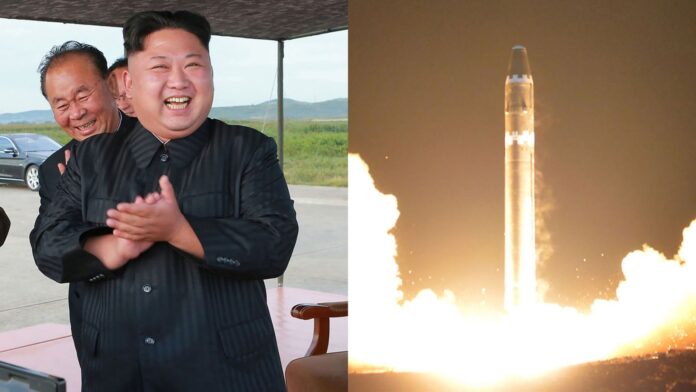Just an hour before U.S. Secretary of Defense Pete Hegseth arrived at the inter-Korean border, North Korea launched several artillery rockets, military theatrics or encrypted diplomacy? As Seoul raises its defense spending and Washington clings to a mask of composure, subtle signals point to a broader regional chessboard.
The Border in the Crosshairs: Artillery and Symbols
On Monday, November 3rd, just one hour before Pete Hegseth’s scheduled appearance in the Demilitarized Zone (DMZ), North Korea fired a salvo of artillery rockets toward the Yellow Sea. Though officially dubbed a “military drill,” the timing suggests more than coincidence—it aligns almost perfectly with the first Pentagon chief’s visit to Panmunjom in eight years, a location deeply charged with historic and geopolitical significance.
According to the South Korean military, the rockets were launched at 4:00 PM local time, precisely one hour before Hegseth’s arrival. Coincidence seems unlikely. This was no random show of force but a calculated signal to Washington, embedded within the rhythms of diplomatic summits and high-level visits.
Hegseth the “Hawk”: Clarity Amid the Static
In response, Pete Hegseth struck a tone of reserved resolve. In a joint press conference with South Korean Defense Minister Ahn Gyu-back, Hegseth acknowledged a “dangerous security environment” and emphasized the shared commitment to remain “clear-eyed about the threats.”
That phrasing is revealing. Clarity suggests not panic but an unblinking recognition of hostile reality. That reality includes a North Korea that never fails to stage a ballistic performance whenever an American or Chinese official visits the peninsula.
South Korea’s decision to increase its 2026 defense budget by 8.2%—the largest hike in six years, reflects this climate. It is not merely fiscal; it is the militarization of a region caught in the gravitational pull of multiple powers.

Weak Signals, Ghost Diplomacy
But behind the noise of rockets lies something quieter—and more telling. Just two days prior to Hegseth’s visit, Pyongyang launched a similar barrage, this time minutes before a summit between South Korean President Lee Jae-myung and Chinese President Xi Jinping. The pattern suggests North Korea is using artillery not simply as threat, but as a diplomatic megaphone.
Meanwhile, Donald Trump—still shaping the American narrative from behind the curtain—has signaled renewed openness toward Kim Jong-un. With three previous meetings under his belt and a fourth mysteriously dropped during his recent Asia tour, the message is consistent: Washington has not closed the North Korean chapter.
But what is truly at stake here? Peace? Stability? Or perhaps the strategic necessity for the U.S. to maintain a flashpoint in East Asia, justifying its military footprint and unequal alliances?
Asia’s Order in Perpetual Tension
South Korea, for its part, walks a precarious tightrope, calling for dialogue (notably during talks with Xi Jinping) while accelerating military development. President Lee’s dual strategy reveals a government torn between diplomatic aspirations and hard security logic.As for Pyongyang, its official silence post-launch is itself a tactic. In this heavily coded region, non-response often carries more weight than overt declarations.
Conclusion: Provocation or Communication?
These North Korean rocket firings are no mere gestures. They represent a form of firepower diplomacy—a psychological campaign now institutionalized within Pyongyang’s statecraft.
While Washington preaches lucidity and Seoul pours billions into defense, it is North Korea dictating the tempo. And as global diplomats hedge and hesitate, the armed status quo remains—fixed beneath the unreadable gaze of Kim Jong-un.



